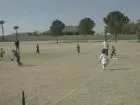
Outdoor Recreation: Page 38










how to
How to Rack ice screws 





























how to
How to Play tee ball 









how to
How to Tailwhip on a BMX 

















how to
How to Start a boat 

how to
How to Recycle a surfboard 



















































